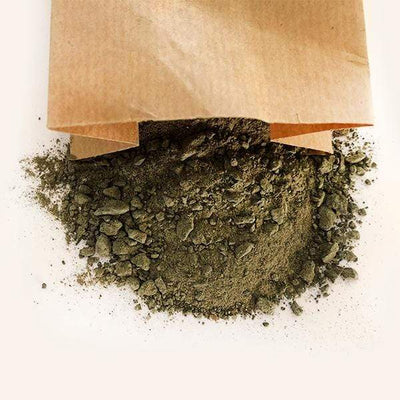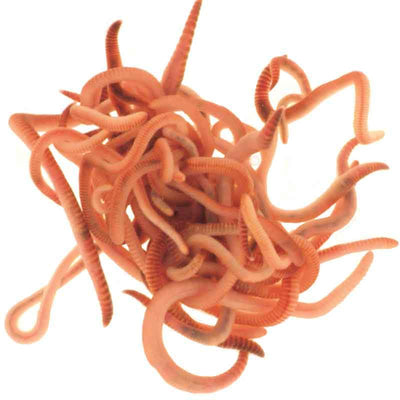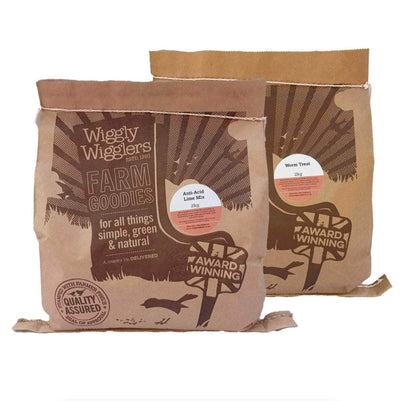You may think that January is a month to forget about the garden and leave things as they are until the weather improves. In reality, January should be seen as the start of the gardening year as the sun is already making its way back from giving its warmth to the southern hemisphere and heading our way. By the end of the month you may be lucky enough to enjoy early snowdrops and aconites. It is also a month to take great care of your garden wildlife as they become particularly vulnerable if the winter turns harsh. Make sure your outdoor wormery is wrapped in breathable fleece or bubble wrap (leaving gaps for air circulation). Remember to keep draining the wormery sump to avoid it flooding.
Everyone feels a bit sluggish after the excesses and laziness of the festivities of December, so getting out in the garden can blow away the cobwebs and give you some exercise. It is also a chance to feel the benefits of those lovely goat socks you got for Christmas as they keep your toes nice and toasty. The exercise may also save you that £500 gym membership which you were never going to use much anyway.
Your garden could need protecting from frosts, gale-force winds and heavy rain. Check stakes, ties, fleeces and other supports for damage and consider moving plants to sunnier positions to maximize light. Freeze and thaw can be a lethal combination so try and not subject tender plants and stored bulbs and tubers to it too much. A cold frame can offer good protection.
Top 10 gardening jobs in January
- Recycle your Christmas taking it to your council site for shredding it for mulch - you can usually bring a bag of mulch back with you. Try squashing some mistletoe berries onto the bark of apple trees to see if you can grow your own for next year.
- Ventilate the greenhouse on sunny days, but remember to close up at dusk. Clean all the glass and staging to banish over-wintering diseases.
- Dig over any remaining plots you haven't yet got around to, but make sure it is not too wet or frozen otherwise you may damage the vital soil structure. Standing on a plank as you dig can help protect from compaction. Rake up any remaining leaves before the new bulb shoots show through, and mulch around shrubs.
- Repair and re-shape lawn edges, but be careful not to walk too much on frozen grass as you can damage it.
- Inspect stored tubers of Dahlia, Begonia and Canna for rots or drying out
- If the ground is soft enough plant your bare-rooted native hedge or trench them until you are ready to put them in their final place. Bare-rooted plants keep much better this way than being stored in their bags.
- Start forcing rhubarb towards the end of the month. If you haven't got elaborate terracotta rhubarb forcers then an old tin bath or bucket will do just as well. Weigh it down with a brick or two if it exposed to the winds.
- Plan your vegetable crop rotations for the coming season. Order seed potatoes, shallots and onions.
- Keep harvesting root crops like parsnips and leeks. Remove dead leaves from sprouts and keep picking them when they are small.
- Stop putting it off! You MUST sort the shed out. Are you really ever going to fix those broken secateurs? If you bundle those canes properly you'll stop falling over them every time you open the door. Old broken canes can be cut down to use row markers.
January Birdlife
January can be a challenging month for garden birds so it is very important to keep your feeders topped-up twice a day. Your garden bird numbers could be swelled by migrants from northern Europe where their food supplies might be running low. Try to avoid disturbing the birds during the first and last hour of daylight as this is when they are most active in either replenishing energy reserves after the night or stocking-up for the next night.
Equally important as food is water. Ensure birdbaths are filled and the water is not frozen. Even in the winter birds need water for both drinking and keeping the insulation properties of the feathers in good order.
Birds may be using nest boxes, dense shrubs, old House Martin nests and the eaves of houses as roosting sites, so be careful not to disturb these sites when carrying out a winter tidy-up. A single House Martin nest can be a roost for up to 25 Wrens!
Even in January birds are turning their thoughts to spring. Robins will be the first to be heard trying out their songs and defending territory, but you will also start to get the first dawn choruses when blackbirds in particular start to develop their song. You sense they are trying out their notes in readiness for a full blast later in the season.
Make sure you take time to watch and enjoy the birds on your feeders, as on a sunny crisp January day you are going to see the birds at their most active. Make a list of all the species you see and record the numbers. Keep this for next year so that you can record the differences between years. You'll soon get addicted and learn the favourite foods and behaviour of your different garden visitors. There's plenty of drama to be seen and you may cheer when you see a Coal Tit stealing a nut off a greedy Greenfinch.
Hedgehogs, amphibians and insects
They should all still be hibernating, but by the end of the month you might see the first bumble bees prospecting for nesting sites. They will look for old mouse nests in banks. Be careful not to disturb sites where hedgehogs may be sleeping. If you have a pond you should try and keep a part of it ice free, but do not shatter a slab of ice as this can harm any fish underneath.
Enjoy the planning and put your feet-up when you can, because you'll soon be mowing the grass again!






